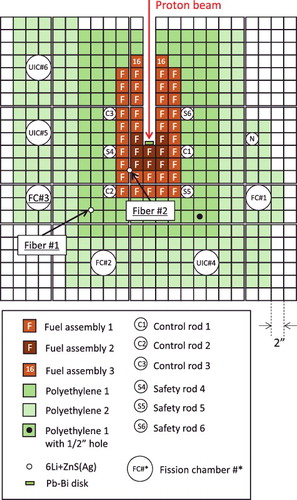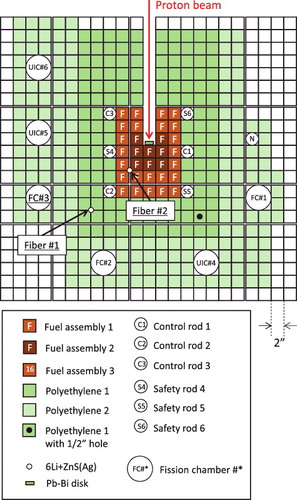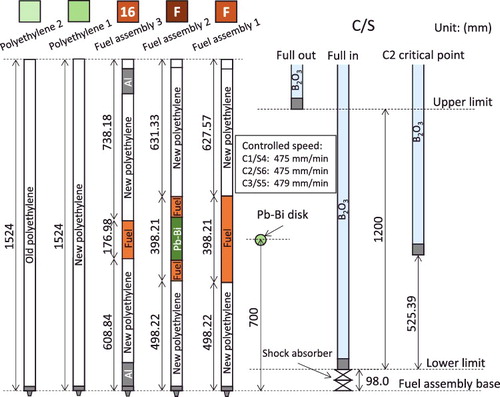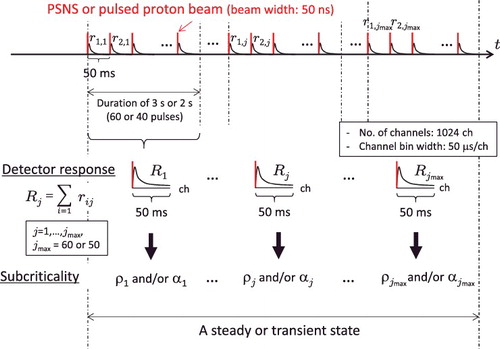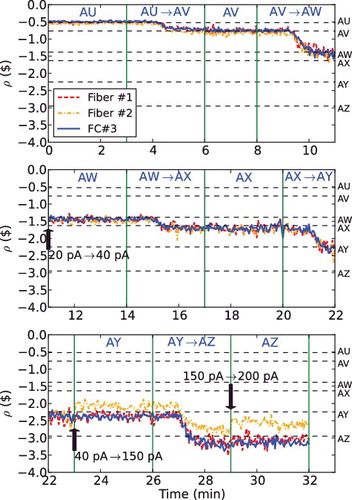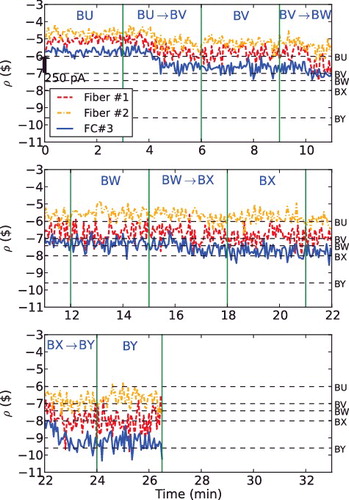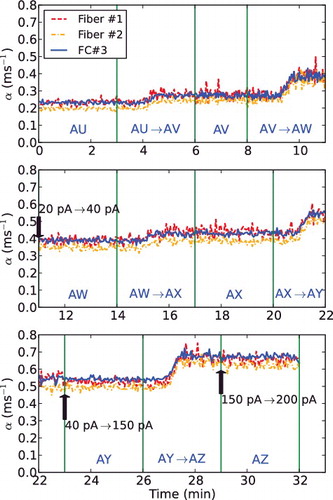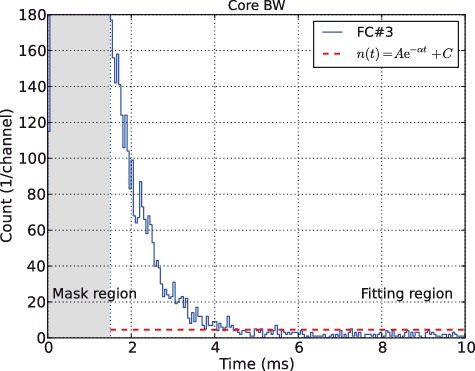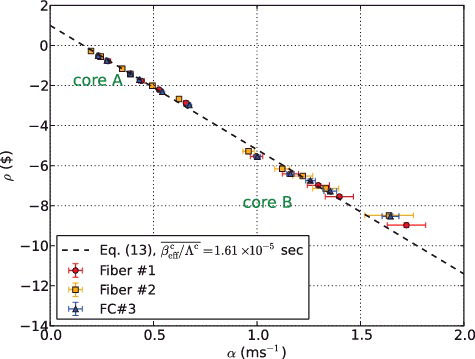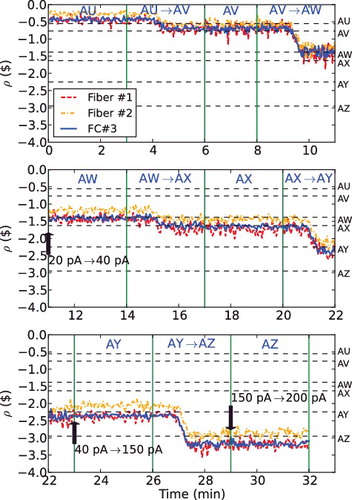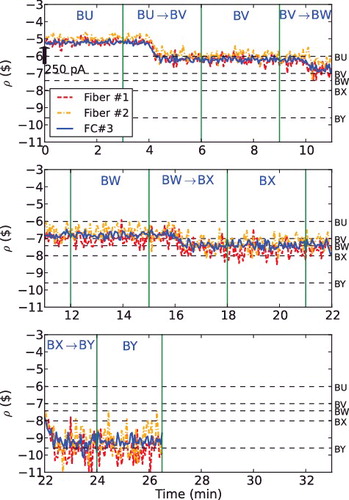Figures & data
Table 1. Conditions of Core A configuration and the reactivity values estimated from rod-drop and positive-period methods compared to the calculated values of keff.
Table 2. Calculated values of βeff, ρ, Λ, and ℓp.
Table 3. Conditions of Core B configuration and keff, βeff, ρ, Λ, and ℓp values deduced from the calculation.
Table 4. Proton beam and spallation target.
Figure 5. Typical detector response to pulsed proton-beam injection obtained from Fiber #1 with the Core AX for a duration of 3 s.
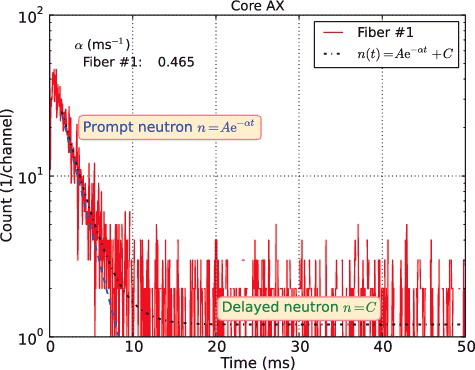
Table 5. Statistical values of ρ obtained from the area-ratio method in Core A and Core B steady states for short-time durations.
Figure 11. Histograms representing the frequency distribution of delayed neutrons (t = 30–50 ms) for the three different neutron detectors. Circles with dashed lines indicate the Poisson distributions.
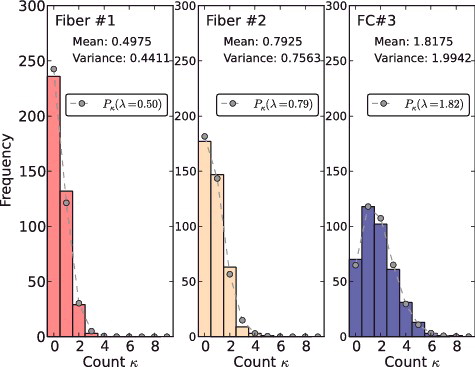
Table 6. Comparison of α values obtained from the conventional and modified α-fitting methods for long time durations.
Table 7. Statistical values of ρ obtained from the modified α-fitting method with the conversion formula in Core A and Core B steady states for short-time durations.

